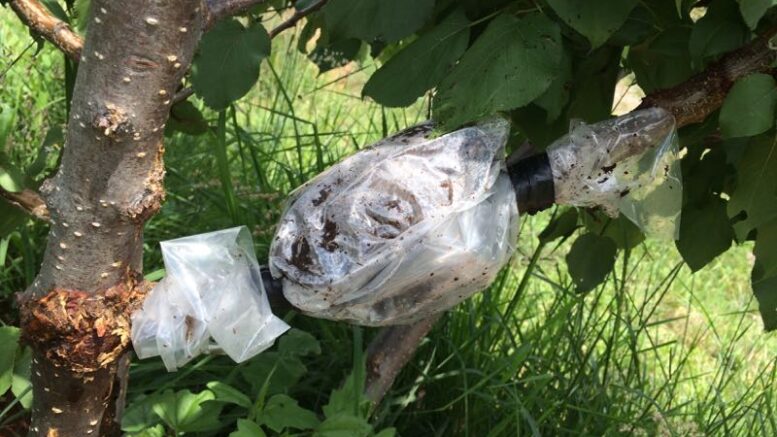Photo Credit – IMG_0685 – velacreations – Flickr
Air layering is a propagation technique that allows gardeners to create new plants from existing ones without having to cut the plant away from its root system. This method is particularly useful for propagating plants that are difficult to root from cuttings. Here’s everything you need to know about air layering, including its benefits, timing, procedure, and tips for success.
What is Air Layering?
Air layering is a method of vegetative propagation where a stem section of a plant is encouraged to grow roots while it is still attached to the parent plant. This technique is often used for shrubs and trees that don’t easily root from cuttings, such as magnolias, rubber plants, and camellias.
Why Air Layer?
Higher Success Rate: Air layering typically has a higher success rate compared to rooting cuttings, especially for difficult-to-propagate species.
Preservation of Genetics: The new plant is genetically identical to the parent plant, ensuring specific traits such as flower color, leaf shape, and growth habit are preserved.
Immediate Benefits: Once rooted, the new plant can be transplanted immediately, allowing for quicker results compared to starting from seed or cuttings.
Strength of Root System: The established roots will be stronger because they’re developed in their natural environment, directly receiving nutrients and moisture from the parent plant until detached.
When to Air Layer
The best time to air layer most plants is during the growing season, typically in spring or early summer. This period coincides with a plant’s active growth phase, which enhances the likelihood of successful root development. However, some tropical plants can be air-layered at different times of the year depending on local climate conditions.
How to Air Layer: Step-by-Step Instructions
Select a Healthy Stem: Choose a young, healthy stem that is at least 1-2 feet long. The stem should be pencil-thick and free of disease.
Make an Incision: About one-third of the way through the stem, make a small circular cut or a slit about 1-2 inches long. This will help stimulate root growth.
Apply Rooting Hormone (Optional): While not always necessary, applying rooting hormone to the cut area can enhance rooting success.
Wrap with Moist Media: Take a handful of moist sphagnum moss, vermiculite, or a similar medium, and wrap it around the cut area of the stem. This moisture-retentive medium provides the roots with the necessary environment to grow.
Cover the Wrapped Area: Use plastic wrap or aluminum foil to encase the moist medium, securing it with twine, tape, or plant ties at both ends to retain moisture and humidity.
Monitor and Maintain: Check regularly to ensure that the moss remains moist. If it dries out, the rooting process can be compromised.
Look for Roots: Depending on the plant species and conditions, roots should begin to develop within a few weeks to a few months. Once a substantial root system has formed (about 2-4 inches of roots), the new plant is ready to be cut away.
Detach and Transplant: Carefully cut the stem below the newly developed roots and remove the plastic or aluminum foil. Transplant the rooted section into a new pot filled with potting soil, and water it thoroughly.
Additional Tips for Successful Air Layering
Choose Moisture-retentive Substrates: Sphagnum moss is a favorite among gardeners for its ability to retain moisture and promote root growth.
Avoid Excessively Thick Branches: Air layering works best on younger stems rather than older, woody branches, which may take longer to root.
Seal and Protect: If using plastic wrap, ensure to seal it tightly but make small punctures to allow airflow, preventing mold.
Be Patient: Some plants take longer to root, so patience is key. If the process is taking too long, don’t rush into cutting the branch prematurely.
Post-Transplant Care: After transplanting, treat the new plant with care. Place it in a shaded area for a few days to help it acclimate, then gradually introduce it to sunlight.
Conclusion
Air layering is a highly effective propagation method that can yield strong, healthy plants while preserving the characteristics of the parent. With the right techniques, timing, and care, gardeners can successfully multiply their favorite plants and expand their gardens. Whether you’re looking to propagate a beloved shrub or tree, or simply explore different gardening techniques, air layering is a rewarding option to consider.

